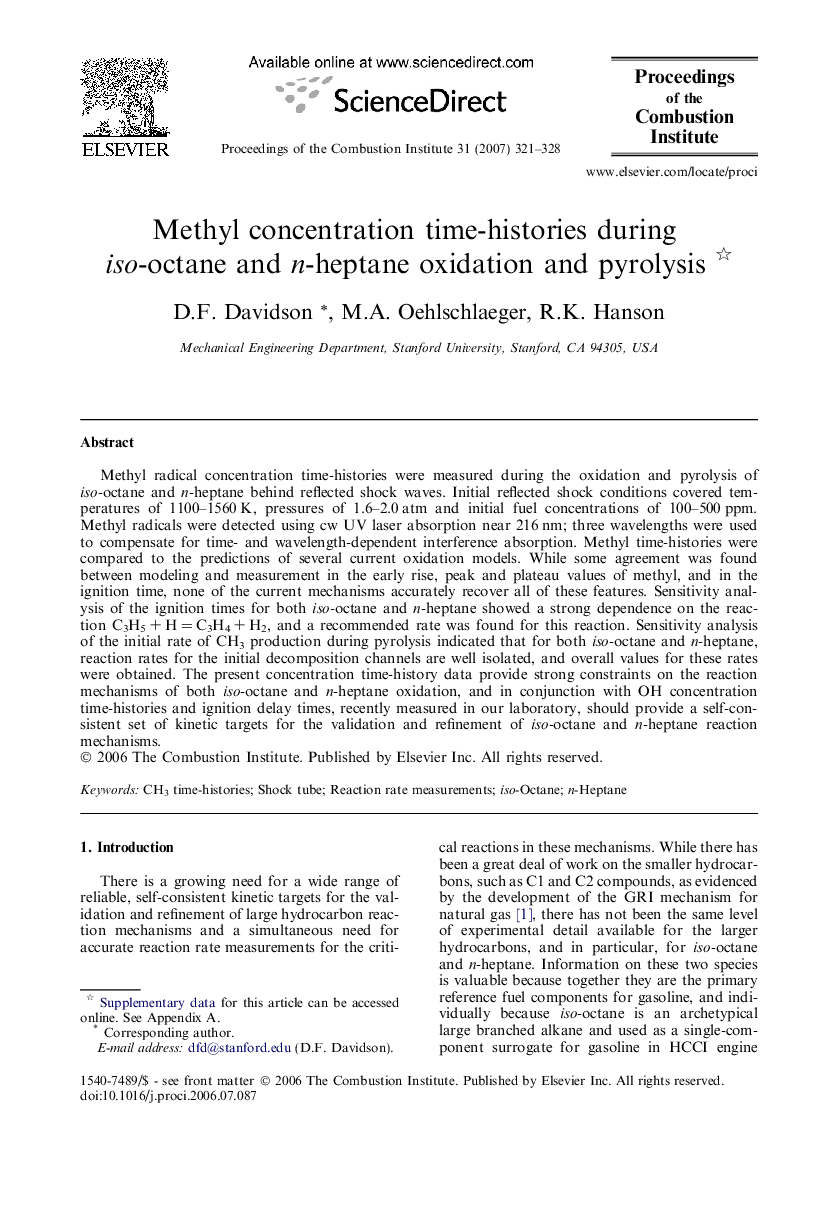| Article ID | Journal | Published Year | Pages | File Type |
|---|---|---|---|---|
| 240735 | Proceedings of the Combustion Institute | 2007 | 8 Pages |
Methyl radical concentration time-histories were measured during the oxidation and pyrolysis of iso-octane and n-heptane behind reflected shock waves. Initial reflected shock conditions covered temperatures of 1100–1560 K, pressures of 1.6–2.0 atm and initial fuel concentrations of 100–500 ppm. Methyl radicals were detected using cw UV laser absorption near 216 nm; three wavelengths were used to compensate for time- and wavelength-dependent interference absorption. Methyl time-histories were compared to the predictions of several current oxidation models. While some agreement was found between modeling and measurement in the early rise, peak and plateau values of methyl, and in the ignition time, none of the current mechanisms accurately recover all of these features. Sensitivity analysis of the ignition times for both iso-octane and n-heptane showed a strong dependence on the reaction C3H5 + H = C3H4 + H2, and a recommended rate was found for this reaction. Sensitivity analysis of the initial rate of CH3 production during pyrolysis indicated that for both iso-octane and n-heptane, reaction rates for the initial decomposition channels are well isolated, and overall values for these rates were obtained. The present concentration time-history data provide strong constraints on the reaction mechanisms of both iso-octane and n-heptane oxidation, and in conjunction with OH concentration time-histories and ignition delay times, recently measured in our laboratory, should provide a self-consistent set of kinetic targets for the validation and refinement of iso-octane and n-heptane reaction mechanisms.
